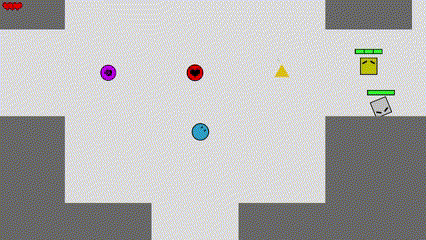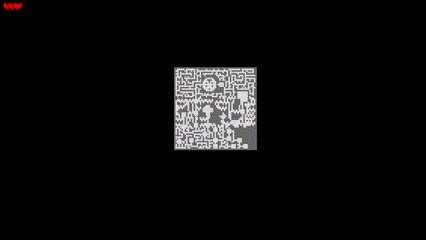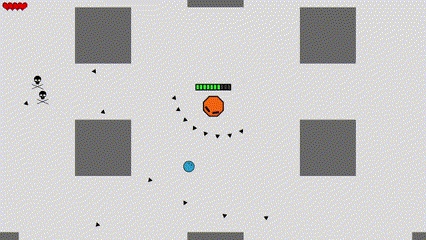
High Concept
A project made for an assignment. Explores the functionality of Procedural Generation (PCG) in level design. It focuses on programming PCG algorithms, designing diverse rooms, crafting unique upgrades, and developing a variety of enemies.
Developement Time
2 months
Genre
Top down dungeon crawler
Platform
PC
Team size
1
Engine
Unity
Role
Programmer / Designer
Contributions
Created a PCG (Procedurally Generated) level in unity built with specifically designed rooms and hallways
Crafted a fun Top Down Shooter experience with Upgrades as well as a variety of enemies that populate the level through various rounds of playtesting.
At the end of the project i had created a system that generated a new level every time it was played that was fun and engaging for players
The final boss of the PCG Shooter features a challenging two-phases, accessible only after players locate a randomly generated key on the map. Designed to be a formidable opponent, the boss incorporates mechanics from earlier gameplay, such as enemies spawning from other enemies and similar bullet patterns. Balancing the boss for various stages of player progression while ensuring it remains universally fair and enjoyable was a valuable experience, complementing the overall process of developing a procedurally generated dungeon crawler.
The PCG Shooter project served as practice for developing procedurally generated levels and designing balanced enemies and spaces to create a cohesive, engaging experience. In the final product, I implemented upgrades that enhanced player abilities, such as increased movement speed and power boosts that granted additional shots and improved firing spread accuracy. These upgrades were scattered throughout the levels and dropped randomly by enemies, providing a sense of progression and ensuring players were equipped to handle tougher enemies as the game advanced.
Here’s an example of the level generation for the PCG Shooter. I implemented a three-tier system defined by the distance from the start of the level, allowing for different types of environments at each stage of the dungeon. I employed common procedural generation strategies, such as drunken walk algorithms, cave pathways, and corridors, to create a varied atmosphere that sometimes feels claustrophobic, achieving the desired tension. As players progress through the tiers, they encounter increasingly difficult enemies, but the rewards also improve, incentivizing playtime and encouraging multiple playthroughs to explore how powerful players can become.



